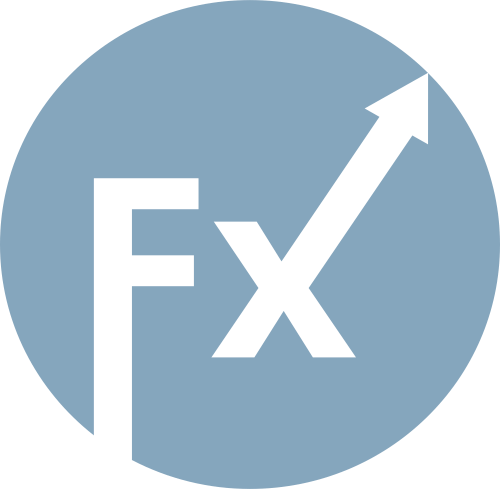All eyes on Wall Street are now fixed on Nvidia's quarterly results, due Wednesday. For many investors, the numbers will be more than just another earnings release. They are seen as a real benchmark for the resilience of the booming artificial intelligence industry.
After months of impressive gains, the heavyweight tech sector slipped by about 1.6% over the past week. Still, Friday brought some relief as stocks rebounded following remarks by Federal Reserve Chair Jerome Powell, who signaled that interest rate cuts may be approaching.
California-based Nvidia has become the ultimate winner of the AI revolution. Its chips are now the backbone of artificial intelligence infrastructure worldwide. In July, the company became the first in history to surpass a four-trillion-dollar market capitalization.
Since October 2022, Nvidia's shares have skyrocketed by more than 1,400%, adding another 30% in 2025 alone. The surge reflects not only enthusiasm for AI but also the rapid expansion of related industries, from energy providers to cooling system manufacturers for massive data centers.
According to Goldman Sachs strategists, the so-called Magnificent Seven — which includes Nvidia, Apple and Microsoft — remain the key engines of U.S. corporate earnings. Their performance continues to shape the direction of major stock indexes.
Next week, traders will also look beyond Nvidia's earnings to fresh U.S. economic indicators, including consumer sentiment and inflation figures. These reports could determine whether the current stock market rally has the strength to continue.
Despite weakness in the technology sector, Wall Street ended the week on a positive note. The S&P 500 gained about 10 percent since the start of the year, closing at an all-time high. The Dow Jones Industrial Average also reached a record on Friday, underlining continued investor optimism about the US economy.
After months of tech-driven growth, some market participants redirected their capital to other industries. Health care and consumer staples, which had been lagging, are now drawing increased interest as investors look for balance in their portfolios.
Asian markets rose on Monday, buoyed by expectations of renewed US rate cuts. Investors are also watching closely for Nvidia's upcoming earnings report, which is seen as a key test of whether sky-high valuations in the artificial intelligence sector can be justified.
Comments from Federal Reserve Chair Jerome Powell reinforced market confidence that a quarter-point rate cut is likely in September. Futures now price in an 84 percent probability of such a move, with projections pointing to deeper easing by mid-2026, potentially bringing rates down to 3.25 — 3.5 percent.
These expectations pushed Treasury yields lower and weakened the dollar. While the shift improved the outlook for corporate profits, it also raised concerns that policymakers are bracing for rising risks of slower hiring and a cooling economy.
Any unexpected resurgence of inflation could derail the bond rally, especially as the US Treasury prepares to issue a massive 183 billion dollars in new debt this week.
On Monday, investor focus turned to the upcoming remarks of John Williams, head of the New York Federal Reserve. Traders are keen to see whether his outlook aligns with Fed Chair Jerome Powell's recent comments on monetary policy.
Regional stocks advanced at the opening of the week. Japan's Nikkei gained 0.6 percent, South Korea's Kospi rose 0.7 percent, and Australia's ASX 200 added 0.4 percent.
The broad MSCI index of Asia-Pacific shares outside Japan climbed 1.1 percent, helped by a one-percent rise in China's blue-chip stocks. The Chinese benchmark has surged nearly 9 percent this month, returning to levels last seen in October of last year. Analysts caution, however, that such rapid gains could trigger a pullback.
European futures opened weaker, with the EUROSTOXX 50 and Germany's DAX slipping 0.2 percent. US stock futures also edged lower, with the S&P 500 and Nasdaq both down 0.1 percent after Friday's rally.
Markets are waiting for more clarity on potential chip supplies to China and the reported deal struck between Beijing and President Donald Trump, under which the Asian chipmaker would transfer 15 percent of revenue from sales of certain advanced semiconductors to the US government.
On Friday, Trump announced that the US government will acquire a 9.9 percent stake in Intel for 8.9 billion dollars. The purchase price of 20.47 dollars per share represents a discount of nearly four dollars compared with Intel's closing price of 24.80 dollars.
In currency trading, the US dollar is holding at 147.38 yen after sliding one percent on Friday from a recent high of 148.77. The euro also regained ground, climbing to 1.1698 dollars compared with Friday's low of 1.1583.
Analysts expect the European Central Bank to keep interest rates unchanged at its September meeting. Still, sources indicate that renewed discussions about possible rate cuts could emerge in the autumn if the eurozone economy shows further signs of weakness.
Commodity markets welcomed the softer greenback. Gold prices reached 3365 dollars per ounce, extending gains after a one percent rise late last week.
Energy markets followed with modest increases. Brent crude advanced to 67.77 dollars per barrel, while US benchmark crude added 0.1 percent to 63.78 dollars.

LINKS RÁPIDOS